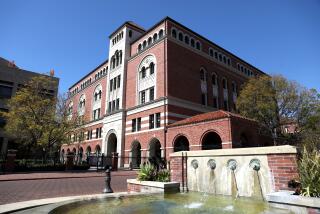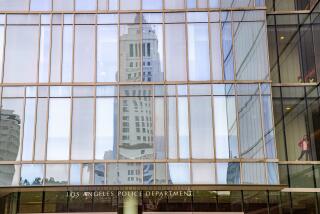Justices to Rule in Death Photos Case
- Share via
WASHINGTON — The Supreme Court announced Monday that it will decide when the public’s right to know about the government’s handling of a tragedy demands the release of color photos of a body.
The justices voted to hear the government’s claim that it may shield from disclosure four close-up photos of former White House Deputy Counsel Vincent Foster, who died 10 years ago in what five separate investigations ruled was a suicide.
Allan Favish, a Los Angeles lawyer who suspects that Foster was murdered, has sought the color photos and won the right to get some of them under the Freedom of Information Act.
But the government’s top lawyer urged the Supreme Court to reverse that decision.
The disclosure law “does not give the public a generalized ‘right to know’ about personal details about private third parties that happen to be maintained in government files,” argued U.S. Solicitor General Theodore B. Olson.
Foster’s death in 1993 has been examined by the U.S. Park Police, by committees of the House and the Senate and by independent counsels Robert B. Fiske Jr. and Kenneth W. Starr.
“Favish wants a sixth guess,” Olson said, and “speculation alone” is not enough to justify requiring the release of the photos of Foster’s body, he said.
The case, Office of the Independent Counsel vs. Favish, will be heard in the fall, and it calls on the high court to draw a line between the right to public disclosure and the right to privacy.
The Freedom of Information Act makes an exception for disclosures that would “constitute an unwarranted invasion of personal privacy,” and Foster’s widow, Lisa Foster Moody, and his sister, Sheila Foster Anthony, filed a brief with the high court urging that the family’s privacy be respected.
The dispute concerns 10 Polaroid photos of Foster’s body that were taken at Fort Marcy Park in Virginia, a National Park Service property overlooking the Potomac River. Foster’s body was found there just a few hours after he left his desk at the White House on July 20, 1993.
He was a close friend of President Clinton and a law partner of Hillary Rodham Clinton in a Little Rock, Ark., law firm.
Foster left behind a note in his briefcase expressing his anguish over the rough treatment given the Clintons and their staff members, including himself, during the first six months of the new administration.
His death triggered another round of investigations, and the critics of the Clintons said it showed the president and his wife had much to hide about their dealings in Arkansas.
Others, including Favish, suspected that Foster was murdered by persons unknown.
The 47-year-old lawyer said he got interested in the Foster case by reading about it on the Internet. In 1997, he sued, seeking 150 photos that were taken at Fort Marcy, and he has received most of them.
The court dispute focused on 10 photos of Foster’s body. A judge in Los Angeles ruled Favish was entitled to have four of the 10.
He appealed to the high court seeking the other six. On behalf of the government, Olson appealed to block the release of the four, and the justices voted to take up his appeal.
More to Read
Sign up for Essential California
The most important California stories and recommendations in your inbox every morning.
You may occasionally receive promotional content from the Los Angeles Times.














